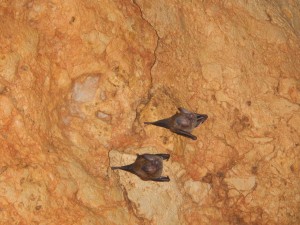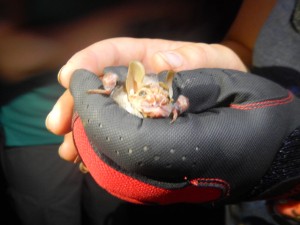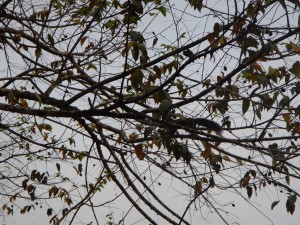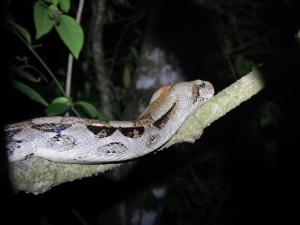I’m sitting at the back of the dorm building in the perfect temperature, listening to the sounds of scarlet macaws and watching everything turn a misty gold as evening rolls in. I love fieldwork.
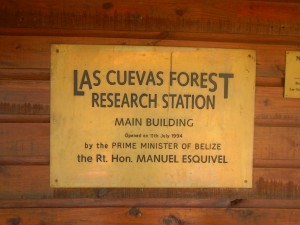
Day 6 proved another successful day for mammal spotting. During another early morning walk, we spotted coatimundis just off the trail. At least two individuals were climbing and jumping through the trees, sometimes at spectacular heights. After some careful observation, we also noticed some Central American spider monkeys in a tree a bit further away. The monkeys seemed to be foraging, and their somewhat trill calls could be heard if we listened closely. We also heard Mexican black howler monkeys very close by, but did not see them. I swear that they’re taunting me.
While we spent a lot of time indoors today, we also learned a lot about scientific practice. After collecting the urine and water pit fall traps that had been set up yesterday, we sorted through the arthropods collected in them. I found many species of ants, a spider, a cricket, and a roach. We then calculated the numbers of species and individuals in urine versus water traps in both the canopy and on the forest floor. Depending on the statistical tests used, we got different results as to which community sought out the nitrogen-rich urine more. This demonstrates the importance of choosing the correct statistical metrics when analyzing data.
We are also doing a lot of lectures today in order to open up time when we head to the Belize Zoo in two days. Tonight, we will have a presentation by one of the researchers stationed here at Las Cuevas who is studying jaguars. I am really excited to meet her and hear about her work! We are also going to take a night hike later in the night. I’m hoping to see some mammals on this trek (or at least some eye shines), as many species are nocturnal.
I’m definitely in my element here.


